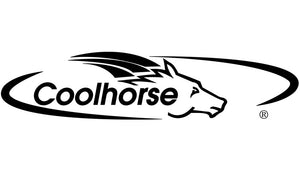Is my saddle pad worn out?

stacey |
Saddle fit is currently a popular topic for discussion and many advances are being made in the industry to make our equine athletes more comfortable. Horseman are widely coming to realize that a horse that is in pain or in a bind will not perform as well as a comfortable, well fit horse. This is exciting for me to see as a rider! I want my horse (and yours) to be happy, healthy and comfortable. However, something that disturbs me about this trend is the neglect of the next part of the equation - even a perfectly fit saddle can be uncomfortable when paired with a worn out pad.
Saddle pads are like your socks. Even your favorite, most broken-in pair of boots will quickly become uncomfortable without good socks. Imagine having a hole in your sock where the boot rubbed. Or a hard lump just under the ball of your foot that you felt with every...single....step. That would get on my nerves in a hurry, yet horseman often overlook the condition of the saddle pads they are using and put their four legged partners in the same situation day in and day out.
First you need to understand what your saddle pad is doing. With every stride your horse takes the longissimus dorsi muscles in his top line move. These are the muscles that run along his spine under the bars of the saddle, and where the majority of the weight of both rider and saddle rest. These muscles alternately contract and thicken, then relax and lengthen. Each time a muscle contracts and relaxes the saddle pad flexes and compresses to cushion him. The weight of a rider also fluctuates causing rhythmic compression in the pad. Even a well balanced rider with a good seat is going to move slightly, and those movements transfer through your seat, saddle, and pad to your horse's muscles.
There is a lot of technology behind today's saddle pads, but just like the latest Nike's, they have a lifespan. After time or repeated use (and of course the combination of the two) they will lose the ability to cushion and protect your horse's back. Riders need to be vigilant about cleaning and inspecting saddle pads to make sure that they are still functioning as they need to. Over time, synthetic materials saddle pad materials tend to crack or become hard. If they develop surface cracks these can pinch and pull hair. Severe cracks can rub sores. Pads that may look fine on the surface but have become hard are no longer cushioning your horse and can actually do more harm than good. If a synthetic material is layered as a filler in between others materials (such as the ESP or Air Ride pads) it can be really hard to check for wear, but the pressure test (more detail below) can help you there.
Natural fiber pads don't usually wear out in the same way as synthetics. You aren't likely to see cracks develop and without salt deposits the material itself won't freeze up and get hard without salt. You will sometimes still see rock-hard spots develop where sweat has worked up into the pad and dried, leaving salt crystals behind. These salt deposits can become extremely hard and cause open sores or just soreness in general. Wear also affects these pads. In a fleece pad you will sometimes see places where the fleece eventually rubs off leaving bare spots, or the fibers may break off leaving spots that are not exactly bare, but definitely have less plush protection than they should. Felt pads may pill or develop lumps from shifting within the pad as they get old.
Now for the pressure test I promised you- all pad materials will eventually lose the ability to rebound to the original shape after being compressed, even if they look perfect on the outside. To check this, I like to put the pad down on a clean patch of concrete, but any hard, firm surface will work. Look at the areas of the pad that lay between the longissimus dorsi and the bars of the saddle tree, and often you will primarily see wear towards the front tips of the bars due to shoulder muscle movement. Press as hard as you can on those areas. You should feel the pad compress under your hand. Then remove the pressure slowly to feel how quickly the pad is able to rebound to it's original position. I also will remove pressure quickly and watch. If you cannot compress the pad at all, or very little, then it is not compressing and cushioning your horse during a ride. If you can feel the pad compress and rebound, then you need a way to rate the amount of compression. Compare the response of the pad in that high compression area under the bars with the response in a less used area. On a square western pad a good spot to look at (that is compressed very little during riding) is towards the back, bottom corner of the saddle pad. Press and release with the same exertion there. If you have a newer pad of the same type, you could also compare your used pad to that new pad. If there is a huge difference, it's probably time to trade in the old saddle sad. If you feel similar pressure response in both areas, I would bet that you still have some miles left.
I hope that this helps you to take a good look at your saddle pads and make sure that your horse is comfortable and your saddle pad is functioning as it needs to! If you think that it is time to trade in your pad and need help choosing a new one, be sure to give us a call or drop us an email. We would love to help you and your horse stay happy and have a great ride.
